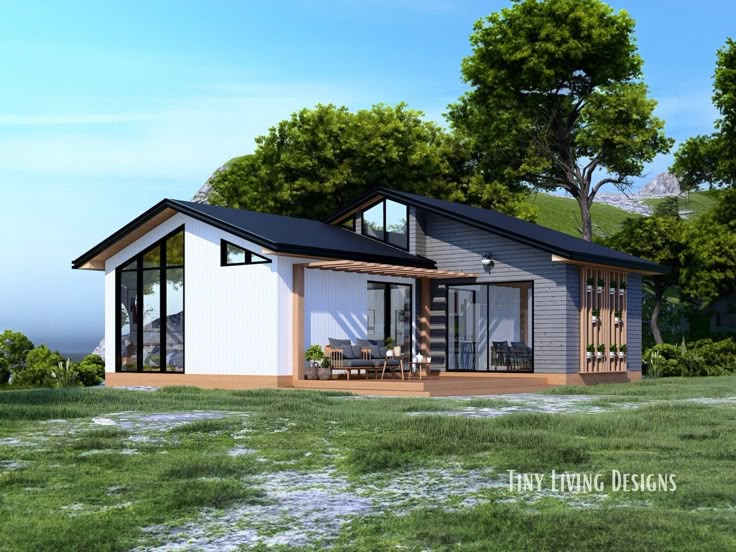
The Modern Blueprint for Aging Well: Integrating Health, Connection, and Purpose
The Evolving Definition of a Life Well-Lived
In our data-driven world, the concept of “aging well” has increasingly become a game of numbers. We track our steps, monitor our sleep cycles, analyze our blood pressure, and celebrate favorable lab results as benchmarks of success. This quantification of health, fueled by wearable technology and a burgeoning wellness industry, has provided invaluable tools for managing physical vitality. However, an exclusive focus on biometrics presents an incomplete and often sterile picture of a thriving later life. True wellness transcends fitness scores and cholesterol levels. It is a rich, multi-dimensional tapestry woven from physical health, deep social connections, a purposeful mindset, and a supportive environment. This article explores a holistic blueprint for aging well, moving beyond the dashboard of data to embrace the interconnected pillars that create not just a longer life, but a more resilient, joyful, and meaningful one. We will delve into the science of social connection, the importance of our physical and financial environments, and provide actionable strategies to build a comprehensive plan for longevity and fulfillment.
Section 1: The Foundation of Physical Vitality: Data-Informed, Not Data-Dictated
The modern approach to physical health provides us with an unprecedented level of insight into our own bodies. This data is a powerful foundation for aging well, but it is crucial to understand both its strengths and its limitations. A balanced perspective allows us to use this information as a guide, not a rigid set of rules that overshadows other critical aspects of well-being.
The Power of Biometrics and Proactive Health Management
There is no denying the benefits of monitoring key health indicators. Regular check-ups and modern diagnostics can catch potential issues early, transforming reactive healthcare into a proactive strategy. Key metrics provide a tangible snapshot of our internal health:
- Cardiovascular Health: Tracking blood pressure, resting heart rate, and cholesterol levels are fundamental. According to the American Heart Association, managing these numbers can significantly reduce the risk of heart disease and stroke, the leading causes of mortality worldwide.
- Metabolic Health: Monitoring blood glucose and A1c levels is crucial for preventing or managing type 2 diabetes, a condition that can accelerate aging processes. The latest Nutrition News consistently links metabolic health to dietary choices, making data from a continuous glucose monitor (CGM) a powerful tool for personalizing your diet.
- Physical Fitness: Metrics like VO2 max (a measure of cardiovascular fitness) and grip strength are strong predictors of longevity and functional independence. Incorporating regular Fitness Tips that target both cardio and strength training is essential for maintaining these scores.
- Sleep Health: Wearable devices have brought Sleep Health into focus, tracking stages like REM and deep sleep. Quality sleep is non-negotiable for cognitive function, hormone regulation, and cellular repair.
The Pitfalls of a Purely Quantitative Approach
While valuable, an over-reliance on data can lead to several pitfalls. Firstly, it can foster a sense of “health anxiety,” where minor fluctuations in numbers cause undue Stress Management challenges. Secondly, it can de-emphasize subjective feelings. You can have perfect lab values but still feel disconnected, uninspired, or lonely. Thirdly, it overlooks the aspects of health that are difficult to quantify, such as resilience, purpose, and social fulfillment. A person with slightly elevated blood pressure who enjoys a robust social life, volunteers regularly, and engages in lifelong learning may be “aging better” in a holistic sense than a person with perfect biometrics who is socially isolated and lacks purpose. The goal is to use data as one tool in a much larger Holistic Health toolkit.

Section 2: The Social Imperative: Why Your Brain Needs Connection
While physical health forms the bedrock of aging well, scientific evidence increasingly shows that the quality of our social connections is a powerful predictor of both lifespan and “healthspan”—the years we live in good health. The human brain is fundamentally wired for connection, and neglecting this biological need has tangible, negative consequences.
The Neurobiology of Social Wellness
Loneliness is not just an emotional state; it’s a physiological stressor. Research has shown that chronic loneliness can be as detrimental to one’s health as smoking 15 cigarettes a day. The mechanisms are rooted in our neurochemistry:
- Cortisol Reduction: Meaningful social interactions trigger the release of oxytocin, a hormone that promotes bonding and counteracts the stress hormone cortisol. Chronically high cortisol levels contribute to inflammation, weakened immunity, and an increased risk of chronic disease.
- Cognitive Reserve: Engaging in conversation, debating ideas, and sharing experiences with others is a complex cognitive workout. This social stimulation helps build “cognitive reserve,” a concept in neuroscience that refers to the brain’s ability to improvise and find alternate ways of getting a job done when a primary pathway is damaged. This reserve can help delay the onset of dementia symptoms.
- Resilience and Mental Health: A strong social support network is a primary buffer against life’s adversities. Knowing you have people to rely on enhances psychological resilience and is a key component of positive Mental Health. This is why strong Relationships and a sense of Community Living are so vital.
Best Practices for Cultivating Social Capital
Building and maintaining a strong social fabric requires intentional effort, especially as life circumstances change with age. Here are some actionable strategies:
- Prioritize Intergenerational Connections: Engage with people of all ages. Mentoring a younger person in your field, volunteering at a school, or simply spending quality time with grandchildren or younger neighbors can provide a profound sense of purpose and keep your perspective fresh.
- Leverage Hobbies for Connection: Join a book club, a gardening group, a hiking club, or a local sports team. Shared interests are a natural foundation for building new friendships. This is where Hobbies and Personal Development intersect with social wellness.
- Embrace Volunteering: Contributing to a cause you care about is a powerful way to foster a sense of Social Impact and connect with like-minded individuals. This act of service can provide a new identity and purpose, particularly after retirement.
- Nurture Existing Bonds: Don’t take long-standing friendships and Family Life for granted. Schedule regular calls, plan visits, and use technology to stay connected with loved ones who live far away.
Section 3: The Environment for Thriving: Home, Finance, and Purpose
Aging well is not just an internal process; it is profoundly influenced by our external environment. Creating a supportive physical space, ensuring financial security, and cultivating a sense of purpose are the structural beams that support a high quality of life throughout the years.
Your Home as a Sanctuary for Wellness
Our homes should be more than just shelters; they should be environments that promote safety, comfort, and well-being. Thoughtful Home Improvement and Interior Design can have a significant impact on our daily lives.
- Safety and Accessibility: Simple modifications like installing grab bars in the bathroom, ensuring good lighting to prevent falls, and creating clear, uncluttered pathways are crucial for maintaining independence. Home Security systems and Smart Home technology can add further layers of safety, with features like automated lighting and emergency alerts.
- Psychological Comfort: The principles of Minimalism and Decluttering can reduce stress and cognitive load. An organized home, filled with meaningful objects and natural light, can be a source of calm and joy. Incorporating elements of nature through Plant Care and Urban Gardening can also boost mood and air quality.
- Sustainable and Healthy Living: Adopting Eco-Friendly Living practices, such as using Natural Cleaning products and reducing waste, contributes not only to planetary health but also to a healthier indoor environment, free from harsh chemicals.
Financial Resilience and the Pursuit of Purpose
Financial stress is a major contributor to poor health outcomes. Proactive Financial Planning is not about accumulating wealth for its own sake, but about creating the freedom and security to live a full life without constant worry.
- Creating a Secure Foundation: Working with a financial advisor to create a sustainable plan for retirement is a cornerstone of aging well. This involves smart Investment News awareness, disciplined saving, and realistic Budget Tips. Financial security reduces a significant source of chronic stress.
- Funding a Life of Purpose: With financial stability comes the opportunity to pursue passions. This could mean more travel (keeping up with Travel News for inspiration), investing in Hobbies, or funding DIY Projects. For many, this phase of life offers a chance for a “second act,” which might involve part-time work, starting a small business, or dedicating more time to creative pursuits. This is where Career Advice can pivot towards encore careers and passion projects, enhancing Work-Life Balance.
Section 4: The Integrated Blueprint: Recommendations and Best Practices
An effective strategy for aging well integrates all these elements—physical health, social connection, and a supportive environment—into a cohesive lifestyle. It’s about creating a virtuous cycle where positive habits in one area reinforce and enhance well-being in others.

A Holistic Weekly Wellness Plan: A Practical Example
Instead of focusing on isolated goals, consider a weekly structure that touches on all pillars of well-being:
- Movement and Mindfulness (3-5 times/week): This could be a brisk walk with a friend (combining fitness and social), a Yoga News-inspired home practice, or a strength training session. Pair this with a daily Mindfulness or Meditation practice to manage stress.
- Social Engagement (2-3 times/week): Schedule a lunch date, a video call with family, a volunteer shift, or attendance at a community event. Be as intentional with your social calendar as you are with your doctor’s appointments.
- Purposeful Activity (Daily): Engage in an activity that provides a sense of accomplishment and joy. This could be related to Gardening Tips for your garden, working on a personal project, or practicing a skill.
- Nourishment and Self-Care (Daily): Focus on whole foods and Healthy Recipes. Incorporate self-care rituals, whether it’s a relaxing bath, a dedicated reading hour, or a simple Beauty & Skincare routine. This is part of respecting and caring for your body.
- Environmental Optimization (Weekly): Dedicate a small amount of time to Home Organization or a small home improvement task. This maintains a serene and functional living space.
Common Pitfalls to Avoid
- The “All or Nothing” Mindset: Don’t let perfect be the enemy of good. Missing one workout or eating a dessert doesn’t derail your entire effort. Consistency over perfection is key.
- Social Isolation Creep: It’s easy to fall into a routine of staying home. Actively push against this inertia by accepting invitations and initiating plans, even when you don’t feel like it.
- Neglecting Financial Health: Putting off Financial Planning can lead to immense stress later in life. Start early and seek professional advice to create a roadmap for your future.
- Ignoring Mental and Emotional Health: The stigma around Mental Health is fading. Acknowledge feelings of anxiety, depression, or loneliness and seek support from friends, family, or professionals when needed.
Conclusion: Redefining Success in the Journey of Aging
Aging well in the 21st century requires a paradigm shift. We must move beyond the narrow, data-centric view of health and embrace a more expansive, humanistic model. While tracking our physical metrics is a useful tool, it is not the ultimate measure of a successful life. The true art of aging well lies in the integration of a healthy body, a connected mind, and a purposeful spirit. It is found in the laughter shared with friends, the satisfaction of nurturing a garden, the security of a well-planned future, and the wisdom gained from a life of continuous learning and contribution. By intentionally cultivating our social bonds, optimizing our environments, and pursuing what gives us meaning, we can build a future that is not only longer in years but richer in quality, resilience, and joy.
Archives
- December 2025
- November 2025
- October 2025
- September 2025
- August 2025
- October 2023
- September 2023
- August 2023
- July 2023
- June 2023
- May 2023
- April 2023
- March 2023
- February 2023
- January 2023
- December 2022
- November 2022
- October 2022
- September 2022
- August 2022
- June 2022
- May 2022
- April 2022
- March 2022
- January 2022
- December 2021
- November 2021
- October 2021
- August 2021
- November 2020
- July 2020
- May 2020
- April 2020
- March 2020
- August 2018
- July 2018
- June 2018
- April 2018
- March 2018
Categories
- Age Groups
- AI/ML
- Alternative Medicine
- Animal Health
- Animal Husbandry
- Animals
- Anti-Aging
- Architectural Design
- Auditory Science
- Augmented Reality
- Automation
- Babies
- Baby
- Beauty & Skincare
- Biohacking
- Biomechanics
- Book Reviews
- Breastfeeding
- Budgeting
- Business
- Cardiovascular Health
- Career Advice
- Career Development
- Career Growth
- Cats
- Chess
- Chronobeauty
- Circular Economy
- Cleaning Tips
- Cloud Computing
- Cognitive Health
- Cognitive Performance
- Cognitive Science
- Community
- Community Building
- Community Engagement
- Community Living
- Computer Vision
- Consumer Guides
- Consumer Trends
- Container Gardening
- Content Analysis
- Content Non-Technical
- Content Strategy
- Cosmetic Chemistry
- Cultural Events
- Cycling
- Data Analysis
- Data Engineering
- Data Science
- Design Psychology
- Developer Productivity
- Diet
- Diet
- Digital Identity
- Digital Media
- Digital Wellbeing
- DIY Projects
- Dogs
- Engineering Culture
- Entertainment News
- Environmental Impact
- Environmental Science
- Equity Compensation
- Exercise
- Exercise Science
- Exercise Technique
- Exotic Pets
- Fall Gardening
- Family
- Family Health
- Family Life
- Fashion Business
- Fashion Industry
- Fashion News
- Fashion Tech
- Financial Analysis
- Financial Planning
- Flooring Maintenance
- Food
- Food Psychology
- Food Safety
- Food Tech
- Functional Fitness
- Functional Training
- Future Of Work
- Garden Care
- Garden Maintenance
- Gardening Tips
- Greece
- Greek
- Greek Food
- Gymnastics
- Hardware Engineering
- Health
- Health And Wellness
- Health Informatics
- Health Science
- Health Tech
- Healthcare Management
- Healthy Eating
- Healthy Recipes
- Holistic Health
- Holistic Wellness
- Home & Living
- Home Decor
- Home Financing
- Home Health
- Home Improvement
- Home Organization
- Horticulture
- Identity Management
- Industrial Design
- Industry Analysis
- Infant Nutrition
- Infrastructure Management
- Ingredient Deep Dive
- Integrative Medicine
- Interior Design
- Internet of Things
- Internet of Things (IoT)
- Invalid Request
- Investment Strategies
- Investment Strategy
- IoT
- Kids
- Leadership Development
- Learning Strategies
- Lifestyle
- Lifestyle Brands
- Lifestyle News
- Lifestyle Optimization
- Literary Criticism
- Literature
- Logistics Management
- Material Science
- Materials Science
- Meal Planning
- Media Analysis
- Meditation
- Mental Health
- Mental Performance
- Mental Wellness
- Miami
- Miami Food
- Mind And Body
- Minimalism
- Mobile Development
- Neuroscience
- No Applicable Categories
- Nutrition
- Nutrition News
- Operating Systems
- Operational Resilience
- Opinion
- Organization Tips
- Outdoor Living
- Over 40
- Over 50
- Over 60
- Parenting
- Parenting
- Parenting Strategies
- Performance
- Personal Development
- Personal Finance
- Personal Growth
- Personal Productivity
- Pet Care
- Pet Safety
- Philosophy
- Politics
- Productivity
- Protein
- Psychology
- Psychology of Space
- Reading Culture
- Real Estate Investment
- Recipes
- Regulatory Compliance
- Remote Work
- Renovation Planning
- Resource Management
- Responsible Pet Ownership
- Retail Strategy
- Robotics
- Science
- Seafood
- Seasonal Gardening
- Security
- Self-Care
- Skincare Science
- Skincare Trends
- Sleep
- Sleep Health
- Smoothies
- Social Impact
- Soft Skills
- Soil Health
- Spatial Computing
- Spatial Design
- Stress Management
- Supplements
- Sustainability
- Sustainability Science
- Sustainable Engineering
- Sustainable Fashion
- Systems Engineering
- Tax Optimization
- Tax Strategy
- Travel
- Travel News
- Travel Safety
- Travel Tips
- Trend Analysis
- Uncategorized
- Urban Planning
- Veggie
- Virtual Events
- Volunteering
- Wealth Management
- Wearable Technology
- Wellness
- Wellness Technology
- Work-Life Balance
- Workplace Culture
- World
- Writing
- Writing Skills
- Yoga News
- Zero Waste




Leave a Reply